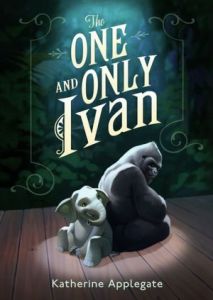Tags
Anaheim, Asian American, Chinese, Chinese American, contemporary fiction, ESL, Front Desk, immagrant, Kelly Yang, Los Angeles, Middle Grade, Must Read, We Need Diverse Books, WNDB
Making Dreams Come True
 Mia Tang has a lot of secrets.
Mia Tang has a lot of secrets.
Number 1: She lives in a motel, not a big house. Every day, while her immigrant parents clean the rooms, ten-year-old Mia manages the front desk of the Calivista Motel and tends to its guests.
Number 2: Her parents hide immigrants. And if the mean motel owner, Mr. Yao, finds out they’ve been letting them stay in the empty rooms for free, the Tangs will be doomed.
Number 3: She wants to be a writer. But how can she when her mom thinks she should stick to math because English is not her first language?
It will take all of Mia’s courage, kindness, and hard work to get through this year. Will she be able to hold on to her job, help the immigrants and guests, escape Mr. Yao, and go for her dreams? [Synopsis]
Discovering the Power of the Written Word
FRONT DESK measured up to all the praise, and then went beyond. It should be required reading in every middle school for a number of reasons. Mia’s pursuing her dream of becoming a writer in the face of discouragement from her family is an important lesson for us all. She didn’t give up or give in, no matter what anyone else said.
Mia discovers the power of the written word when the letters she writes to help solve the problems of her friends produce positive results. Mia expresses her courage with words. There are times when she pretends to be an adult for appropriate authority, in her effort to help a friend and right an injustice. The truth in Mia’s words resolves difficult situations and opens avenues for better lives for her family and friends.
Five things I love most about this book:
1 The Main Character—Mia is compassionate, smart, sensitive, and determined to help her family and friends realize the dream of a better life. Mia radiates an attitude of inclusion, making friends with the Weekly residents at the motel her parents manage as well as students in her class.
2 The Honesty—The author based this fictional story on her own experiences growing up, helping her parents manage a motel. This is a truthful view of the immigrant experience of her parents’ generation, told in a matter-of-fact tone without resentment. It is in turn heartbreaking for the inequities, and heartfelt in the strong sense of family and community that persevered.
3 The Compassion—In spite of the inequities and racist treatment Mia witnesses toward her parents’ generation of immigrants, she responds with kindness and a willingness to help right those wrongs.
4 The Relationships—Mia’s best friend Lupe supports her dream, encouraging Mia even when it means her friend could move away. Mia learns to reconcile the aggressions of Jason, the son of the antagonist motel owner, and find the goodness in him too. The Weekly residents stand by one another and help Mia too, becoming a true family.
5 The Courage and Ingenuity—NO SPOILERS! What I can say is that Mia’s courage, ingenuity, and talent for bringing people together result in her dream coming true in a way that creates a happy beginning to a better life for everyone.

































